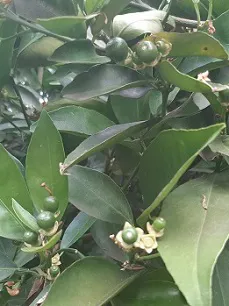 South Africa's Limpopo and Mpumalanga citrus production regions enjoyed mild temperatures during an "almost ideal" fruit set this spring on all cultivars, including on seedless Valencias.
South Africa's Limpopo and Mpumalanga citrus production regions enjoyed mild temperatures during an "almost ideal" fruit set this spring on all cultivars, including on seedless Valencias.
Regions that have been receiving sub-average rainfall for years now, had substantial rain early last month.
"Producers need to be cognisant of the potential negative impact of too high fruit set, of which a reduction in fruit size is the most problematic," the South African citrus industry's technical service Citrus Research International reminds growers.
"Besides, a negative influence can be expected on rind condition, resulting in higher physiological disorders such as creasing and inadequate colour development. The basis of these negative responses to a too high fruit set lies in the division of finite resources (nutrients and carbohydrates) to all the fruit."
They continue: "A very high crop load could also result in “on/off” alternating cycles for the next season which become difficult to control."
The economic benefit of larger fruit can outweigh the benefits of a larger crop, they point out.
A grapefruit grower in Letsitele, an area with below-average rain for the past few years, confirms that they are currently thinning out their crop.
Growers employ pruning as a thinning technique, especially on mature trees, as well as chemical thinning through synthetic auxins (growth hormones) or by hand thinning.
"Too many fruit per tree translates to too many small fruit, so crop manipulation is important in an "on year", as we're expecting."
Heatwave conditions or water stress could exacerbate fruit thinning: it always remains a carefully calibrated risk when thinning out a crop.
